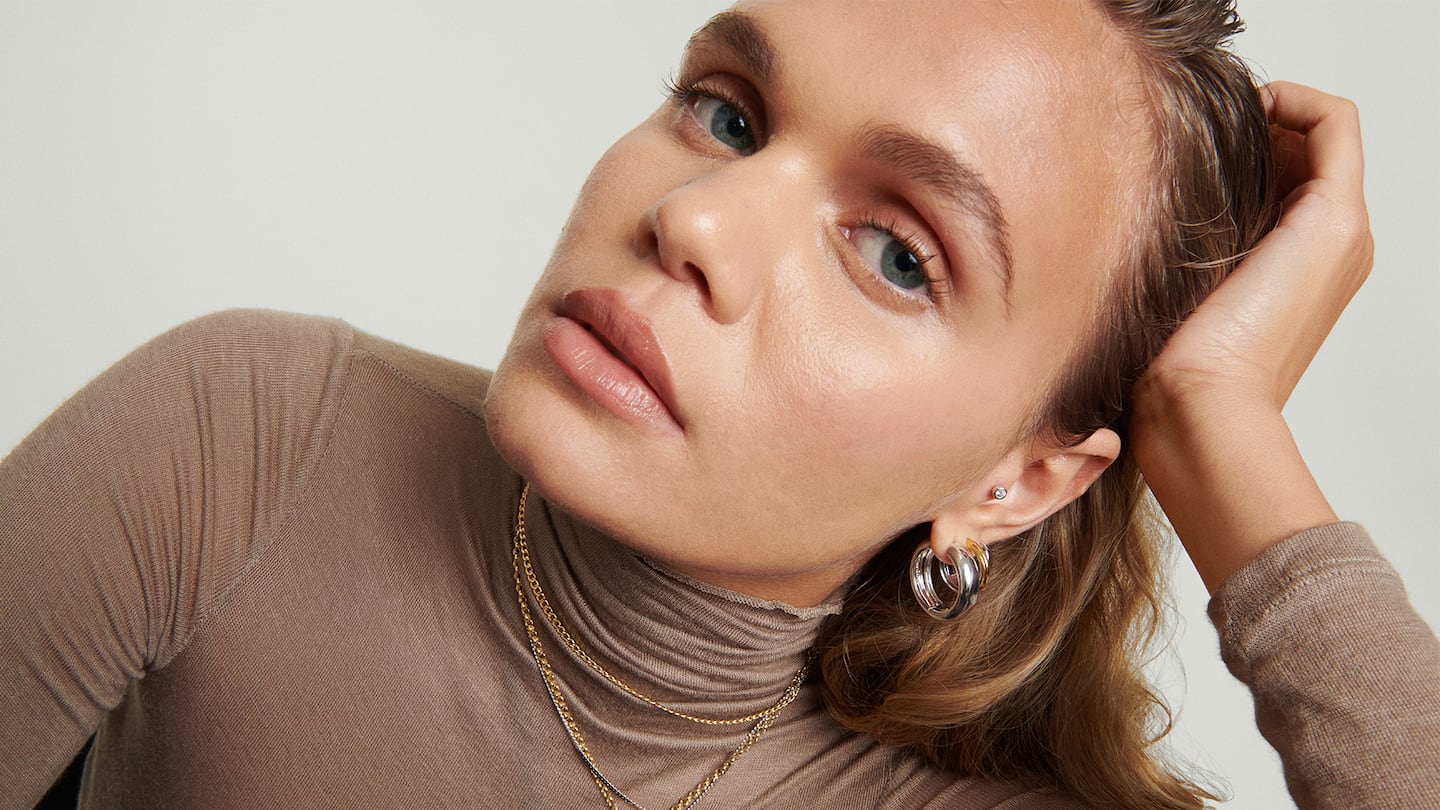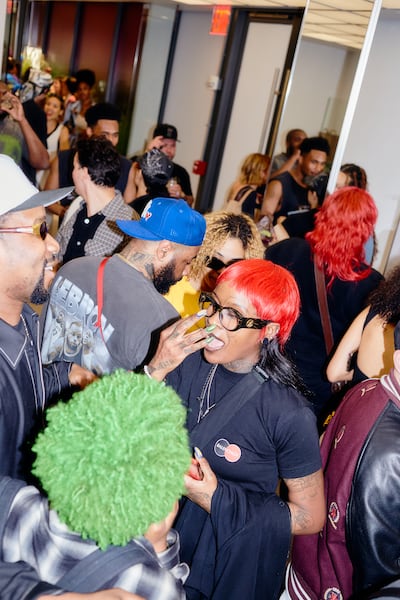
The Business of Fashion
Agenda-setting intelligence, analysis and advice for the global fashion community.

Agenda-setting intelligence, analysis and advice for the global fashion community.

The US economy grew by a sterling 4.9 percent in the third quarter, but many young consumers are convinced they’re living in what TikTok has dubbed the “silent depression.”
It’s more than just a Gen-Z catchphrase: For the past two years, the US economy was buoyed by strong spending despite mounting inflation and rising costs of borrowing. But slower growth in sales from Black Friday and a cascade of retailers slashing their sales targets in recent earnings are signs that a cooldown is underway. Or as the social media posts put it: How are people affording life right now?
Fashion businesses are shifting their approach to marketing and customer service to appeal to the anxious consumer.
“When times are tough, there is always a question of who will stay and who will go away,” said Ana Andjelic, a marketing strategist and chief brand officer at Esprit. “But what we’re talking about is a relationship: Brands need to think about, ‘What is my relationship with my customers and how do I keep this relationship going long term even if they’re not buying?’”
ADVERTISEMENT
In other words, even if shoppers are spending less on fashion and accessories, it’s still crucial for brands to stay relevant in their lives. Sometimes, that means a little personal attention: Money that might have gone toward wide-reaching print ads can more effectively be put to use enticing shoppers with in-person events, buzzy collaborations and improvements to the retail experience online and in stores.
Essx, a boutique that opened in New York last summer, regularly hosts parties that connect shoppers with their favourite emerging designers.
“[Our shoppers] are not buying something just to buy it — they want to know everything about it,” said Laura Baker, co-founder and retail director of Essx. “People won’t stop spending but they’ll be smarter in their purchases and they want to know what they’re buying and who they’re supporting when they’re buying it.”
Services like loyalty programmes, free styling and and fun mobile apps can keep a brand front of mind when consumers are ready to splurge again.
Jewellery brand Mejuri launched a mobile app and a loyalty programme in September, granting users access to exclusive products and a personalised shopping experience. The company will be adding new features to its app next year, according to Majed Masad, Mejuri co-founder and president, including improvements to its styling service and integrations between e-commerce and Mejuri stores.
“We just want to make sure that when [shoppers] are ready and they have that buying intent, that they remember Mejuri and that our brand added value and was great to interact with,” said Masad.
Brands and retailers should look to their stores in order to add value to the customer experience rather than as an arena of cost-cutting, according to Ron Thurston, former retail executive at Intermix and host of the podcast, “Retail in America.”
In stores that struggle with conversion, for example, the retail manager could host product knowledge training sessions or empower associates to play a stylist role to shoppers. A closer analysis of store performance allows merchandisers to shift products from store-to-store in order to reach full-price shoppers at one location that another might not attract.
ADVERTISEMENT
Retailers like H&M and Zara, for example, closed underperforming stores in recent years, but redirected those savings toward sprucing up some of their highest-profile locations. H&M’s renovated store on London’s Regent Street now houses a mini beauty salon and clothing rentals.
“If [sales] are in question and the customer experience is bad, that’s just a double down on customers not spending,” Thurston said.
When shoppers are feeling blue, a ubiquitous ad campaign featuring the usual sleek products and impossibly glamorous models won’t resonate. In the worst case scenario, it could even come off as tone-deaf.
Smaller — and cheaper — marketing initiatives could be more effective in these times, brand operators say.
Esprit will lean into influencer partnerships and event sponsorships in lieu of digital or print ads. Social media content created through these activations can then serve as brand marketing material, no photoshoot or big creative production needed, said Andjelic.
The brand recently worked with photographer Kat Irlin on a series of ads and featured her as a brand ambassador, highlighting Irlin’s images as well as an interview with her on Esprit’s website and Instagram page.
“We’re focused on more grassroots efforts, partnering with people and events that allow us to create our own intellectual property,” said Andjelic. “In 2024, our approach would be [to shift] away from print and mass media and toward strategic out-of-home … and amplifying our own content and events through sponsored content.”
Niche cultural tie-ups or sponsorships are also effective in driving conversation. Earlier this year, Mejuri partnered with the US national women’s soccer team ahead of the World Cup, as well as with New York-based label Luar, whose following may be far smaller than Mejuri’s existing customer base but grants the brand bona fide fashion credibility.
ADVERTISEMENT
“If we reduce marketing dollars, we might reduce it on performance marketing but invest it more into brand elevating initiatives and things that get us closer to our community,” said Masad. “There’s always going to be competition or macroeconomic pressures. We want to engage in conversations and be relevant.”
In 2024, Esprit will be an official sponsor of Copenhagen Fashion Week and host an event exhibiting artwork from local emerging artists — a concept that it will repeat in New York City in March.
At Essx, the average shopper tends to be young and therefore is more vulnerable to economic pressures. To that end, its customers are very mindful and deliberate in their spending, according to Baker.
Even in a consumer slowdown, it’s possible to generate a sense of demand, or at least identify the type of customer who’s still spending and targeting them directly. For Essx, this means throwing parties for its emerging brands and inviting shoppers to interact with the founders and designers.
Last month, Essx hosted events with streetwear brand 424 as well as with rapper Lil Uzi Vert. Cost-wise, events are not a heavy lift, Baker said, because the alcohol is typically sponsored and the brands contribute to the cost for the decorative build-outs.

For beauty brand Superegg, finding the customer who’s still willing to splurge on skincare means signing spas as retail partners. As of late last year, Superegg can be found at facial treatment chain Formula Fig in Los Angeles, Toronto and Vancouver.
Superegg is in a unique position to benefit from the consumer pullback, said founder Erica Choi, because as shoppers cut back on handbag or ready-to-wear purchases, some will seek out luxury skincare and wellness treatments as the more affordable consolation prize.
“There are people who are cutting back completely, but there are also people who are now focused on wellness and are willing to spend money on it,” said Choi. “If we message them the right way and show up where they are, we can go after the right customer.”
Discounted airfare and lower hotel occupancies in recent months signal weakening demand in the vacation economy. For brands that thrived on “revenge travel,” this means pivoting to more versatile products and offering cheaper options.
Forty-five million American consumers will have to account for a new expense this fall as the three-year pause on student loan interest accruement ends. Retailers resilient to the shock will be those that offer a distinct assortment of products while conveying a sense of value.
Luxury spending may be flagging, and Miami has lost some of its pandemic-era heat. But there are plenty of opportunities for fashion brands if they know where to look.

Cathaleen Chen is Retail Correspondent at The Business of Fashion. She is based in New York and drives BoF’s coverage of the retail and direct-to-consumer sectors.
The British musician will collaborate with the Swiss brand on a collection of training apparel, and will serve as the face of their first collection to be released in August.
Designer brands including Gucci and Anya Hindmarch have been left millions of pounds out of pocket and some customers will not get refunds after the online fashion site collapsed owing more than £210m last month.
Antitrust enforcers said Tapestry’s acquisition of Capri would raise prices on handbags and accessories in the affordable luxury sector, harming consumers.
As a push to maximise sales of its popular Samba model starts to weigh on its desirability, the German sportswear giant is betting on other retro sneaker styles to tap surging demand for the 1980s ‘Terrace’ look. But fashion cycles come and go, cautions Andrea Felsted.